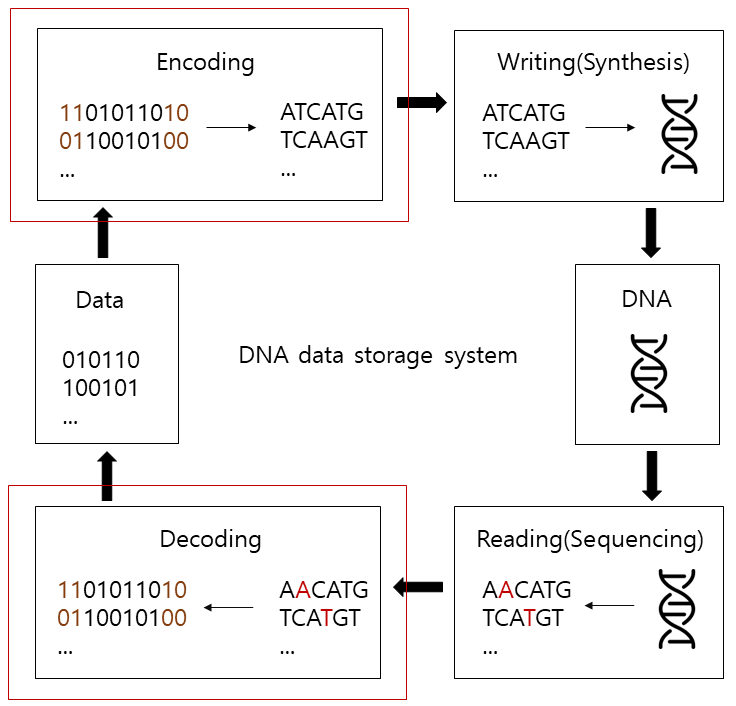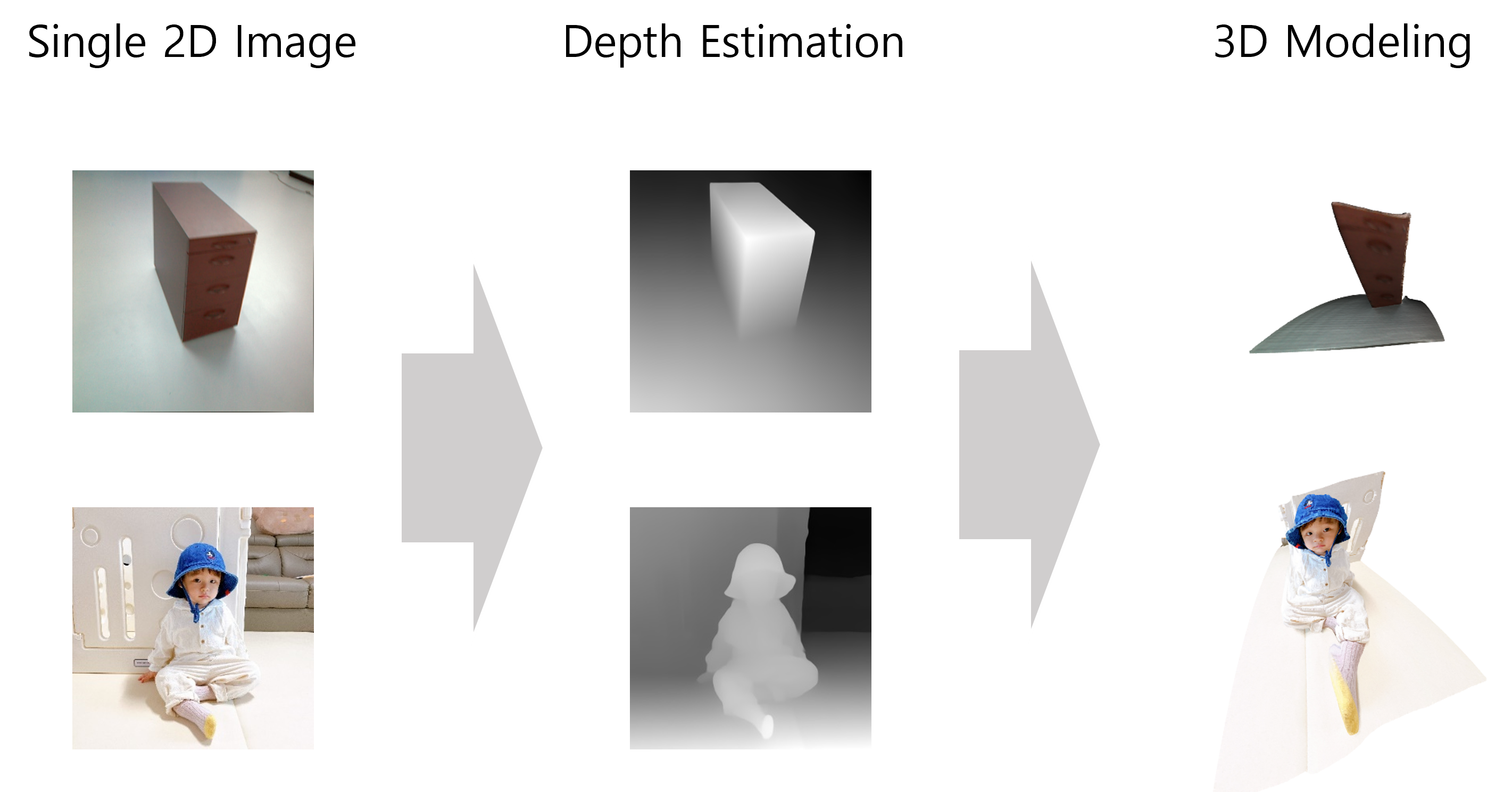
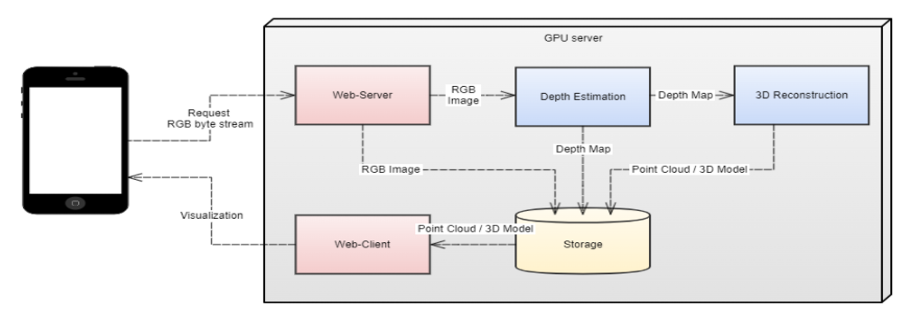
2D - 3D Conversion
The image captured in the mobile environment is transmitted to the server to estimate the depth of the monocular image and generate a point cloud from the RGB-D image to perform modeling.
The 3D modeling process from monocular images is asynchronous, and the generated 3D model is displayed in a mobile environment.
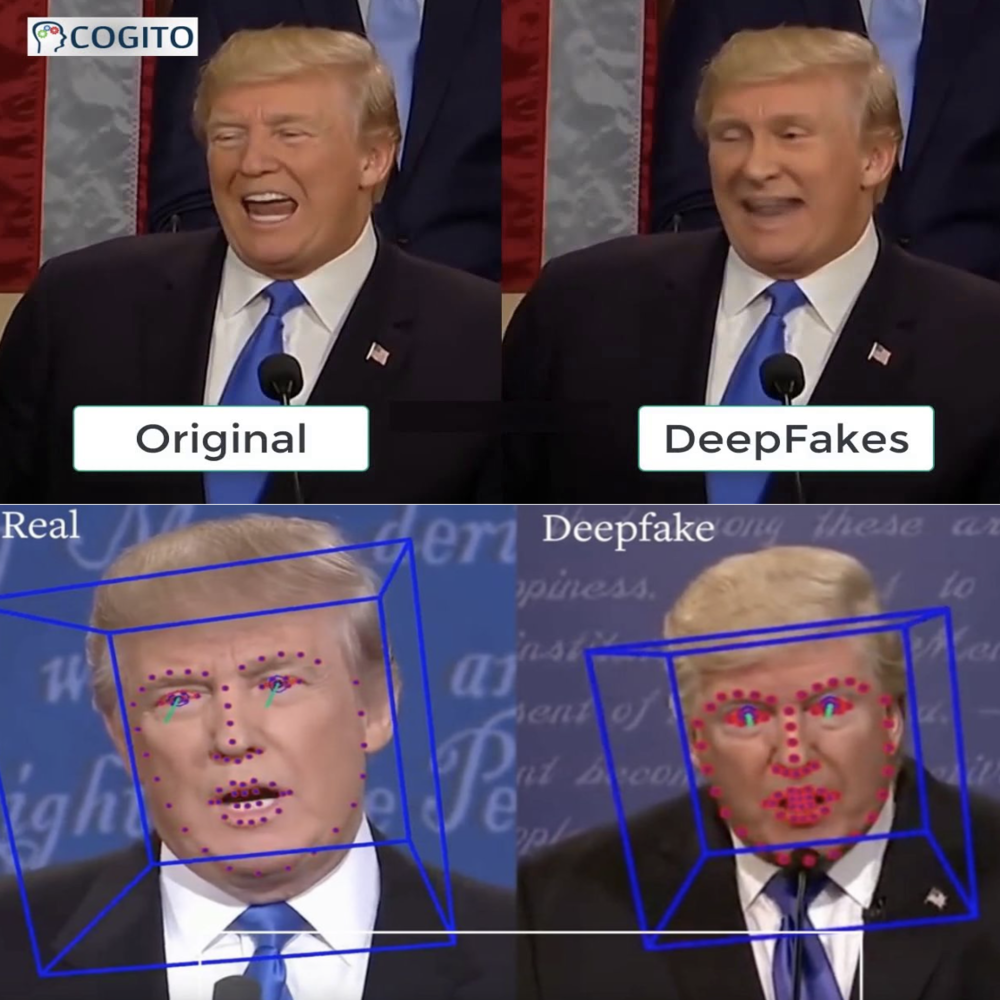
Fake Media Detection
Deepfake (a hybrid of deep learning and fake) is a human image synthesis technology based on artificial intelligence. They can be used in positive ways, but also there are many cases of abuse. It uses a machine learning technology called Generative Adversarial Neural Networks (GANs) to create existing pictures or images by superimposing them on the original pictures or images.
To prevent the use of abuse, we are focusing on deepfake detection. While initial attempts were based on handcrafted features obtained from artifacts and inconsistencies in the fake video synthesis process, recent methods applied deep learning to automatically extract salient and discriminative features to detect deepfakes. Particularly, we are using deep-learning by dividing it into deepfake image detection and video detection.


Light Field Camera Imaging
Light Field Imaging can be applied in many places because light fields can capture spatial information and each information using Main Lens and Micro Lens Array.
Representative examples include Refocusing and All - in - Focus, Novel View and 3D Light field display
Using light-field, refocusing after capturing and depth estimation allows viewer to clearly see the point which they want to concentrate on and catch the anatomy, symomps, anomaly. Thus light-field imaging is potential for application such as medical dignosise, semiconductor defect detection.
We focus on the Development of Light Field Image Super-Resolution and All - in - Focus Image Fusion based Deep Neural Networks

JPEG Coding
JPEG coding is a process of compressing the input image data through Pre-processing , DCT(Discrete Cosine Transform) , Quantization , Huffman coding.
JPEG serves High Resolution compressed image and is adjustable for compression. As a result, JPEG has been the most wide used one.
We benchmark not only existing compression technologies such as JPEG, but also technologies using Deep-Learning method.
As Deep learning neural networks can achieve better compression efficiency than conventional image coding solutions and there is a high demand for compression in the future,
Therefore, A potential advantage of such research is to prepare for the progress of cloud computing, autonomous vehicles and devices and else.

Image Inpainting
What is Image painting?
Image painting is a widely used technique to restore a damaged part of an image or to naturally fill a deleted area after removing unnecessary characters or specific objects in the image. In other words, even if a part of the image is missing, a person can infer the empty part, so it means "I will restore it by applying deep learning technology" as shown in the picture.
In particular, we are focusing on the application of Inpainting that damaged Historical data restoration and occlusion brand logo restoration
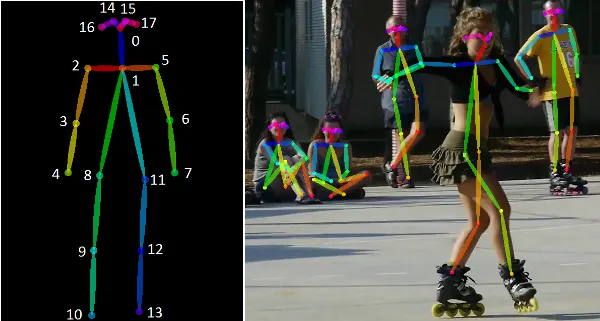
Human Pose Estimation
Pose estimation technology refers to the use of computer vision algorithms to detect and track the human body's pose and movement from video or image data.
Pose estimation technology has many practical applications, such as in the field of sports analysis to track athlete movements and improve training, in healthcare to track patient movements and assess physical therapy progress, and in robotics to allow robots to interact more naturally with humans.
